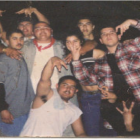
The Myth of Suburban Gangs: A Changing Demographic
|
When most people think of gangs and the criminal activity often associated with them problems of the inner-city may come to mind -– issues that are far from their manicured suburban lawns, something that could never touch their lives directly. But the demographic makeup and geographic location of gangs are changing, according to Rebecca Petersen, author of Understanding Contemporary Gangs in America and a Criminal Justice Professor at Kennesaw State University near Atlanta*. “We have seen this trend of gangs moving out of the city and into the suburbs for 20 years now,” Petersen said. “We don’t associate the suburbs with people being poor or homeless, but it’s one of the fastest growing populations [in the suburbs].”
While gangs are not exclusively comprised of low-income members, the correlation between harsh economic conditions and the proliferation of gang activity has been documented in communities around the country since at least the late 1980s. In the decade leading up to 2010, the suburban poor in major-metropolitan suburbs grew by 53 percent, compared to an increase of 23 percent within the cities, according to the Census Bureau.